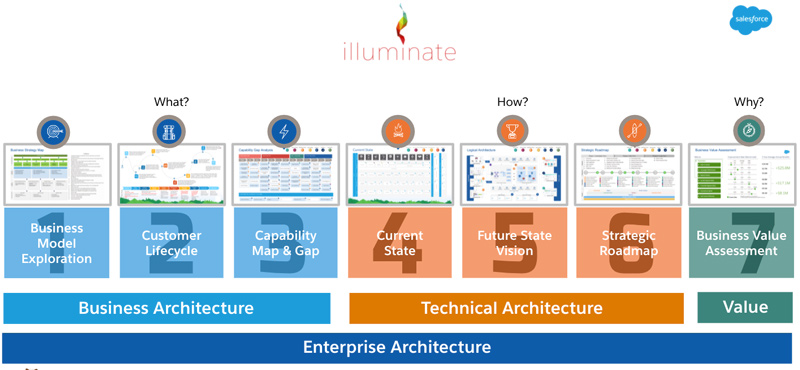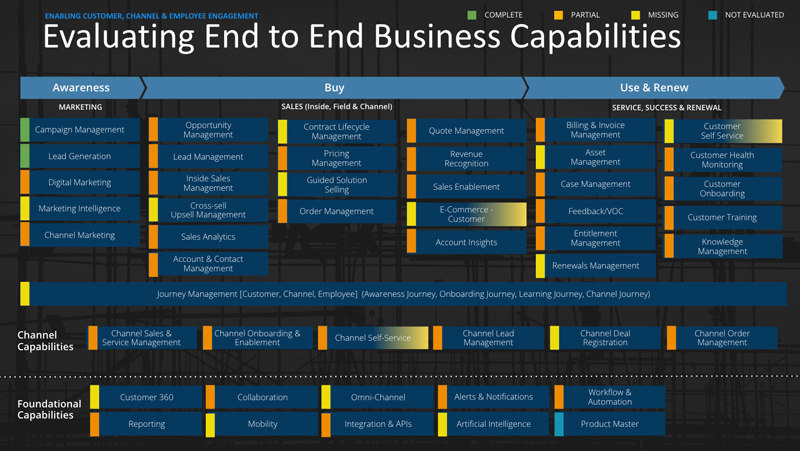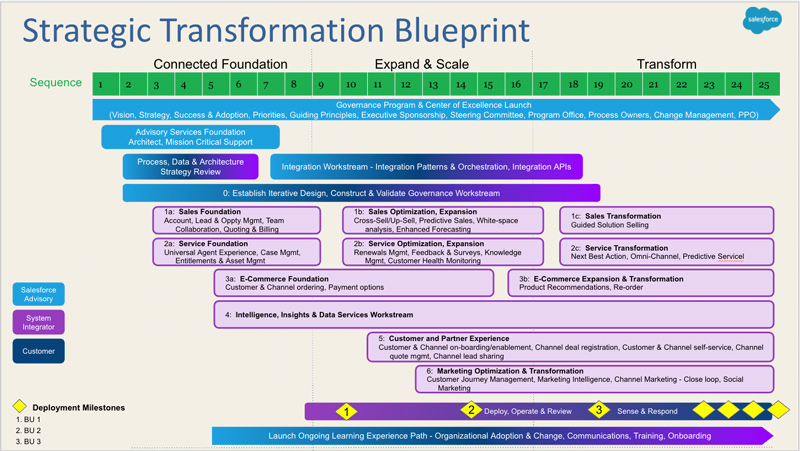COVID-19 has accelerated digital transformation across companies of all sizes and industries. In fact, a recent DBS Digital Readiness Survey found that one in two corporates in India have a digital transformation strategy in place. However, a Forrester Consulting study commissioned by Dell Technologies found that more than 55% of companies, including respondents from India, are struggling to meet their digital transformation goals.
The fact is that digital transformation isn’t just about implementing new technology – rather, it’s about enabling fundamental, large-scale change across the organisation. And that can be challenging. One of our customers, a high-tech manufacturer of software and hardware solutions for the construction industry, had a digital transformation strategy in place to change their revenue model to a recurring revenue one. However, their CFO needed help operationalising this strategy on the ground.
Why do organisations find it hard to turn strategy into execution? Because many of them adopt a siloed or project-based approach to transformation. This approach fragments their business processes, data, and experiences, ultimately driving up costs, and forcing the project to be abandoned.
An enterprise approach, by contrast, looks at transformation holistically, connecting different parts of the business to deliver a cohesive and differentiated customer experience. At Salesforce, we use the mantra, “Think Big, Start Small, Move Fast”, coined by Brett Colbert, VP of Enterprise Architecture. Our Illuminate approach is a pragmatic seven-step approach that builds on this mantra to help create digital transformation blueprints.
What is the Salesforce Illuminate methodology?

The Illuminate framework outlines seven key deliverables that guide both business and technology teams. The first three deliverables focus on the business. This is where we understand the business objectives/goals and map them to the desired customer experience or customer journey. With the business objectives and customer journey as input, we create a capability model for digital transformation.
Once the business needs and business strategy are understood, then the technology strategy can be built. We start by understanding the current state of the technology landscape (deliverable 4). Care should be taken to not get too bogged down in this step. Instead, focus on creating a future state architecture (deliverable 5) that can take the business forward. Post that, we proceed to creating a roadmap or blueprint (deliverable 6) for strategy execution.
The Illuminate framework is anchored in the concept of business value. Hence, one of the key deliverables (deliverable 7) shows the value of implementing the business and technology strategy. The reason why business value is the last deliverable is because the final stage is when it’s ratified. However, in practice, the business value analysis starts from the business model exploration stage and continues through the other stages.
Illuminate in action
To understand how Illuminate works, let’s go back to the example of the high-tech manufacturer who wanted to pivot to a recurring revenue model, We leveraged Illuminate to show the company’s CFO and his team that their digital transformation couldn’t just be about creating new product SKUs, or setting up a subscription and billing process – it had to be broader than that.
The shift to a subscription model needed to be preceded by a shift in the organisation’s mindset – from product-centricity to customer-centricity. That meant building new capabilities such as renewals management, customer success, and customer health monitoring. Also, all of these capabilities had to be connected to deliver a seamless, differentiated customer experience.
Using deliverables one and two from the Illuminate framework, we identified the end-to-end business capabilities needed for the company’s transformation.

Once these capabilities were identified, we conducted a capability gap analysis from three perspectives:
- Complete - The organisation has people, processes, and technologies in place for that capability (e.g., renewals management). It is adequate enough to support future growth and objectives.
- Partial - The organisation has people, processes, and technologies in place for that capability; however, there are gaps either in the way the processes are laid out, or the way technology has been implemented and connected to the overall customer experience.
- Missing - The organisation has people to perform that capability; however they use a manual, paper-based process. Plus, there’s no technology to support future growth, and to deliver the expected customer experiences.
The next step was to prioritise the gaps identified. We evaluated each business capability against three factors:
- The impact the capability would have on the business, and how far it would move the needle towards achieving the desired outcome
- The complexity involved in making the change in terms of people, processes, and technologies
- The dependency on other initiatives and/or adoption and roll-out strategy
With this, we created a blueprint for transformation that could be executed effectively (see illustration below). The organisation is currently implementing the blueprint, and is well on track towards achieving the desired recurring revenue targets.

4 best practices for digital transformation
Some key points to consider when creating a blueprint for change are:
- Always start small. Pick the capabilities that will have the most impact on business outcomes, while being relatively easy to implement. In the above example, we selected capabilities that would change the sales process aligned to recurring revenue and laid the foundation for a customer success function to ensure adoption and renewal of the contract.
- Treat digital transformation as a program rather than a project. Ensure proper governance and a Centre of Excellence structure to guide the implementation of the blueprint.
- Remember that digital transformation is not a lift and shift of the current business process and/or technology. It’s a re-engineering of processes. And it will require the re-skilling and re-tooling of people.
- Don't forget about foundational technology capabilities such as data and integration, that are critical in enabling business capabilities. However, leverage an agile and just-in-time approach to implementing technology capabilities. For instance, focus on incorporating only the data that is absolutely essential rather than boiling the ocean.
The key takeaway is that any change or transformation needs to have an enterprise approach. Various business functions must be unified in a cohesive manner to deliver exceptional customer experiences. Salesforce’s Illuminate framework, built on key enterprise architecture principles, enables this kind of enterprise thinking in a structured, yet agile method.




